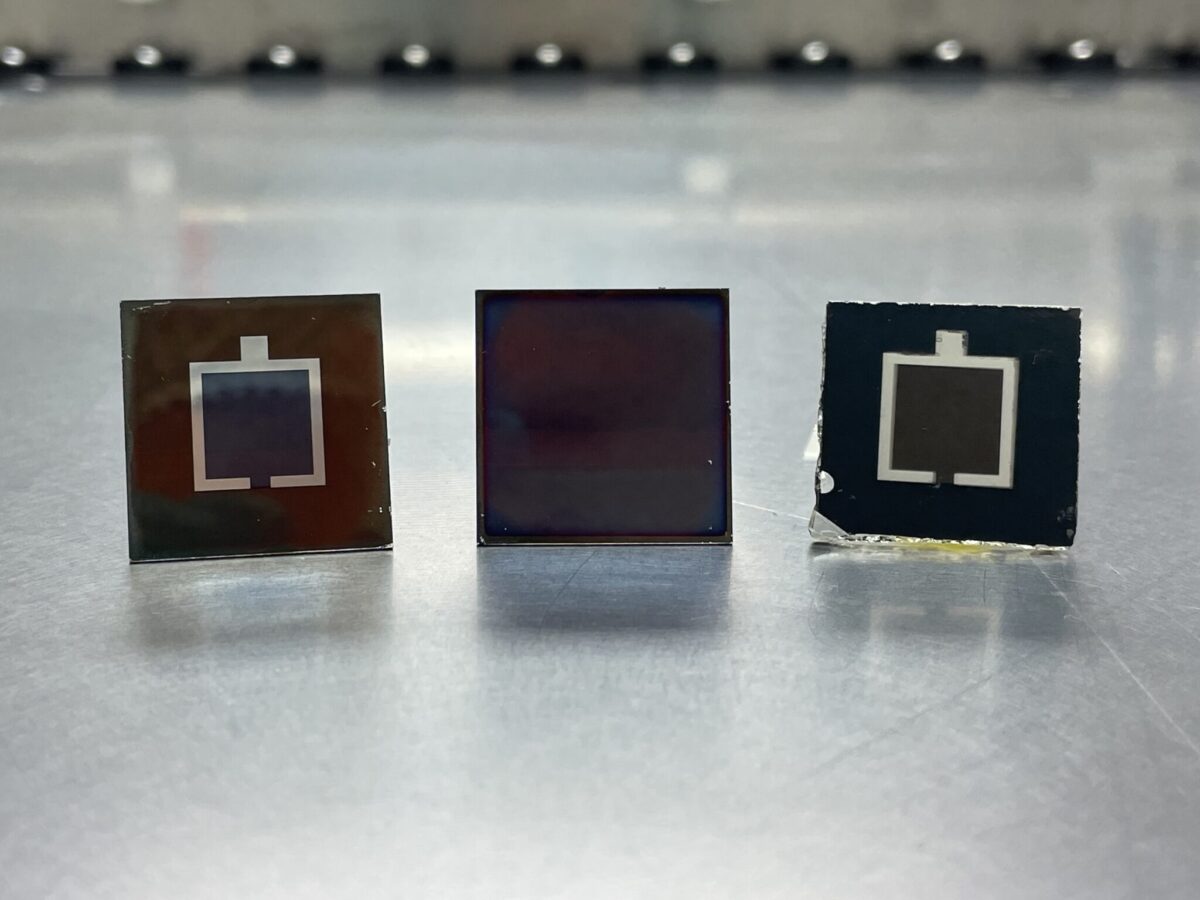From pv magazine Global
An international research team has fabricated a four-junction (4T) tandem solar cell based on perovskite and copper/indium/selenium (CIS) thin-film with a power conversion efficiency of up to 29.9%.
The scientists said they used halide salt methyldiammonium diiodide (MDADI) for surface defect passivation, which they said reduced the open-circuit voltage loss in the device’s top cell based on perovskite while improving the overall tandem cell efficiency and near-infrared (NIR) transmittance.
The scientists grew the top cell through a multi-stage co-evaporation process. The device was based on a substrate made of glass and indium tin oxide (ITO), a hole transport layer (HTL) made of nickel(II) oxide (NiOx), a perovskite absorber, a buckminsterfullerene (C60) electron transport layer (ETL), a tin oxide (SnOx) layer, an ITO layer, and an ultrathin lithium fluoride (LiF) interlayer.
“We then vary the optical pathways within the semi-transparent front cell to realize the control of the interference spectrum,” the team explained. “By matching the optical interference with the AM 1.5 G irradiance spectrum, the perovskite front cell achieves high average NIR transmittance (ANT) of 81.5% and an efficiency of 21.8%.”
The academics also explained that the MDADI-treated film can reach a much higher quasi-Fermi level splitting (QFLS) compared with the one without the treatment. “The pseudo current-voltage (J-V) plot shows that the MDADI-treated film reaches an implied open-circuit voltage of 1.29 V, whereas the untreated film reaches only 1.24 V, and this marks a difference of around 50 mV.”
This top cell was then combined in a tandem device with a bottom cell made with a glass substrate coated with molybdenum (Mo), a CIS absorber, a cadmium sulfide (CdS) buffer layer, and a window layer of zinc oxide (i-ZnO). This device has an efficiency of 17.3%, an open-circuit voltage of 0.60 V, a short-circuit current density of 39.7 mA/cm2, and a fill factor of 72.9%.
Tested under standard illumination conditions, the perovskite-CIS tandem cell achieved an efficiency of 29.9%, which the group said is the highest efficiency ever recorded for a perovskite-CIS tandem solar cell at the research level to date.
The scientists described the device in the study “29.9%-efficient, commercially viable perovskite/CuInSe2 thin-film tandem solar cells,” which was recently published in Joule. “These findings indicate the vast opportunities for all thin-film-based perovskite/CIS tandem cells in diverse applications and pave the way for their commercialization,” they said. “The combination of superior performance and cost-effectiveness makes them an attractive prospect for the solar industry.”
The research group included academics from the National University of Singapore, Switzerland’s Federal Laboratories for Materials Science and Technology (EMPA), and Germany’s Forschungszentrum Jülich.
This content is protected by copyright and may not be reused. If you want to cooperate with us and would like to reuse some of our content, please contact: editors@pv-magazine.com.









By submitting this form you agree to pv magazine using your data for the purposes of publishing your comment.
Your personal data will only be disclosed or otherwise transmitted to third parties for the purposes of spam filtering or if this is necessary for technical maintenance of the website. Any other transfer to third parties will not take place unless this is justified on the basis of applicable data protection regulations or if pv magazine is legally obliged to do so.
You may revoke this consent at any time with effect for the future, in which case your personal data will be deleted immediately. Otherwise, your data will be deleted if pv magazine has processed your request or the purpose of data storage is fulfilled.
Further information on data privacy can be found in our Data Protection Policy.